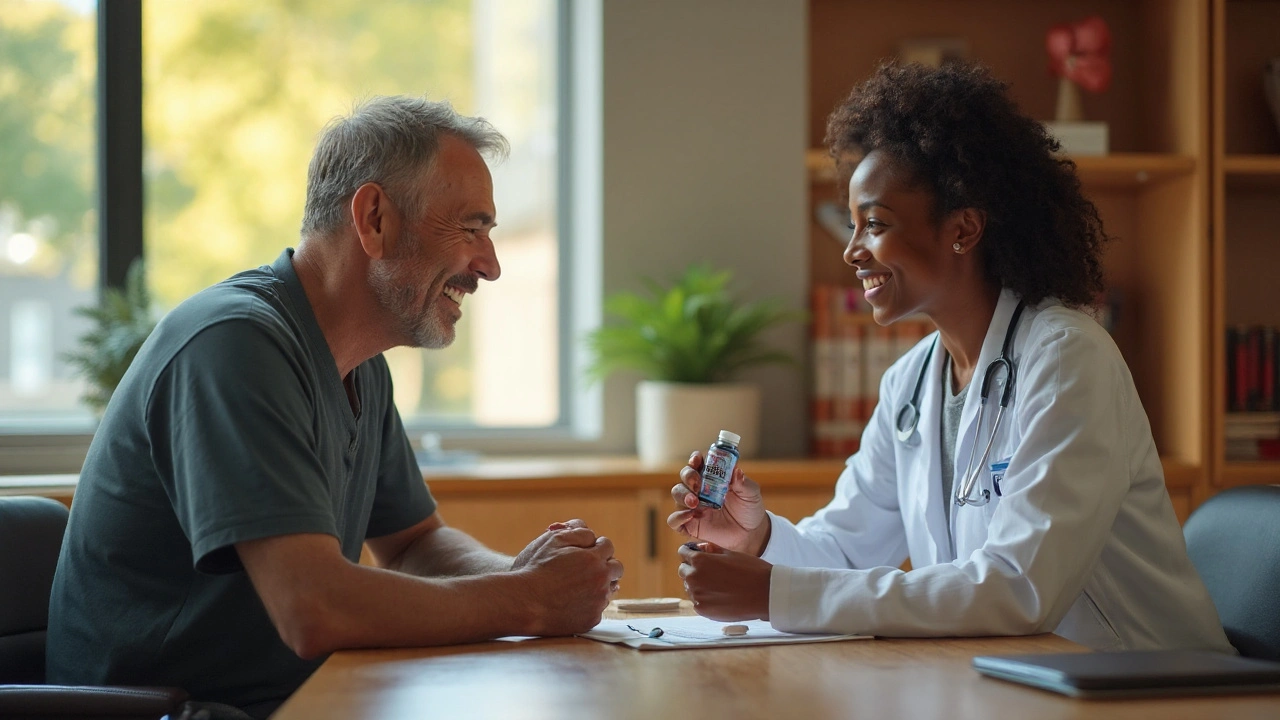Prostate Cancer Medication: What You Need to Know
If you or a loved one have been diagnosed with prostate cancer, the first thing that pops into your mind is probably the drug list. It can feel overwhelming when doctors start naming hormone blockers, chemo agents, and new targeted pills. The good news is that most of these meds follow a clear purpose: shrink the tumor, slow its spread, or keep it from coming back. In this guide we break down the main types, why they’re used, and how to cope with the side effects so you can feel a bit more in control.
Common Medication Types
Hormone therapy is the workhorse for most prostate cancers. Drugs like leuprolide (Lupron) and goserelin lower the amount of testosterone your body makes. Since prostate cells need testosterone to grow, cutting it down can shrink the tumor. These injections are usually given every few months, and most men notice a drop in PSA levels within weeks.
Anti‑androgens such as flutamide, bicalutamide, and the newer enzalutamide block the hormone from reaching the cancer cells. They’re often paired with hormone blockers for a stronger effect. If you’re on a newer drug like apalutamide, you might hear about “metastatic‑free survival” – a fancy way of saying the cancer stays away from other organs longer.
Chemotherapy isn’t the first line, but it becomes important when the disease has spread despite hormone therapy. Docetaxel is the most common chemo for prostate cancer and is given every three weeks through an IV. It attacks fast‑growing cells, which can reduce pain and improve quality of life for many men.
Targeted therapies such as abiraterone (Zytiga) and enzalutamide block an enzyme that helps make testosterone inside the tumor itself. These pills are taken daily and can work even when traditional hormone therapy stops being effective.
Managing Side Effects
All these meds come with side effects, and you’ll likely hear about hot flashes, fatigue, or loss of bone density. The key is to talk early with your doctor or pharmacist. Calcium and vitamin D supplements, plus a simple bone‑density scan, can keep osteoporosis in check. For hot flashes, over‑the‑counter gabapentin or lifestyle tweaks like dressing in layers work for many men.
Chemo can cause hair loss, nausea, and low blood counts. Anti‑nausea meds, staying hydrated, and a balanced diet packed with protein help your body bounce back quicker. If you notice mood swings or depression, bring it up right away – mental health support is just as important as physical treatment.
Keep a medication log. Write down the name, dose, when you take it, and any symptoms you notice. This simple habit makes appointments smoother and helps your care team spot patterns before they become big problems.
Finally, don’t forget the power of support. Online forums, local prostate cancer groups, and even a trusted friend can make a huge difference when you’re navigating the ups and downs of treatment. Sharing tips about managing side effects or just venting about a tough day can lift your spirits and give you practical ideas you might not hear from a doctor.
Prostate cancer medication may feel like a maze, but breaking it down into hormone blockers, anti‑androgens, chemo, and targeted pills makes it easier to understand. Pair that knowledge with a proactive plan for side effects, and you’ll be better equipped to stay on top of your health. Remember, the right drug combo and a solid support network can turn a scary diagnosis into a manageable part of your life.
Caverta Explained: Uses, Dosage, Side Effects & How It Stacks Up Against Other Prostate Cancer Drugs
A detailed guide to Caverta - what it treats, how to take it, common side effects, and a clear comparison with other prostate‑cancer therapies.

